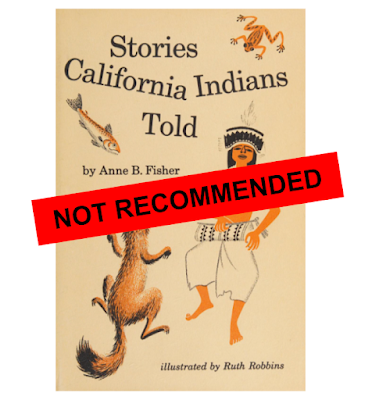This Thursday (September 12), I am giving a webinar in California Indian Ed for All's online book club series. These webinars are open to the public, and there is no charge for them. They start this week and go all the way to June of 2025. They are live/online from 3:30 to 5:00 Pacific Time. Sign up!
If you teach courses in children's literature or social studies or literature or history or library services for youth (getting a bit carried away there, but I do think anyone whose work has to do with Native peoples and children should join), consider asking your students to sign up. I think you just need to register once and you'll be enrolled in all of them. A few days prior to each event you'll receive an email with a link to join in. (Note: I don't know if the webinars will be recorded and made available later.)
If you are a teacher, librarian, or parent, please sign up! You'll hear directly from authors of books you can use in your classroom. Knowing them through the webinars will help you impart more substance to the children you work with.
As you look through the schedule, you'll see children's book authors but you'll also see books from scholars whose books will help you become more knowledgeable about Native peoples. Being more knowledgeable helps you become more adept at teaching children and adults, and they help you see problems like bias and stereotyping.
Sept 12 - Debbie Reese, Selecting and Using Children's Books about Boarding Schools
Sept 12 - Debbie Reese, Selecting and Using Children's Books about Boarding Schools
Sept 26 - Jean Pfaelzer, California: A Slave State
Oct 17 - Traci Sorell, We Are Still Here: Native American Truths Everyone Should Know, Being Home, and Contenders
Oct 24 - Christine Day, We Still Belong, The Sea in Winter, and I Can Make This Promise
Oct 31 - Debbie Reese, Children's Books about Native Youth and their Hair
Nov 7 - Laurel Goodluck, Forever Cousins, Rock Your Mocs and She Persisted: Deb Haaland
Dec 19 - Cynthia Leitich Smith, Hearts Unbroken, Jingle Dancer, and Sisters of the Neversea
Jan 16 - Michaela Goade, Berry Song, Remember, We Are Water Protectors, and Being Home
Jan 23 - Deborah Miranda, Bad Indians: A Tribal Memoir
Feb 13 - Cutcha Risling-Baldy, We are Dancing for You: Native Feminisms and the Revitalization of Women's Coming-of-Age Ceremonies
Feb 20 - William Bauer, California Through Native Eyes: Reclaiming History
Feb 27 - William Bauer, We Are the Land: A History of Native California
Mar 13 - Debbie Reese, Children's Books about Native People in the Sciences
Mar 20 - Dina Gilio-Whitaker, Understanding Stereotypes and Native Americans, Part One: Master Narratives and Root Myths
Mar 27 - Dina Gilio-Whitaker, Understanding Stereotypes about Native Americans, Part Two: Modern Myths
Apr 17 - Carole Lindstrom, We Are Water Protectors, My Powerful Hair, and Autumn Peletier: Water Warrior
April 24 - Monique Gray Smith, My Heart Fills with Happiness, When We are Kind, and You Hold Me Up
May 8 - Laurel Goodluck, Fierce Aunties and Too Much: My Great Big Native Family
June 5 - Debbie Reese, Learn about New Children's Books by Native People
Here's screen caps of the schedule. Each one shows photos of the authors and a list of the books they'll be talking about. They are arranged according to months. Share this post with everyone you know!






